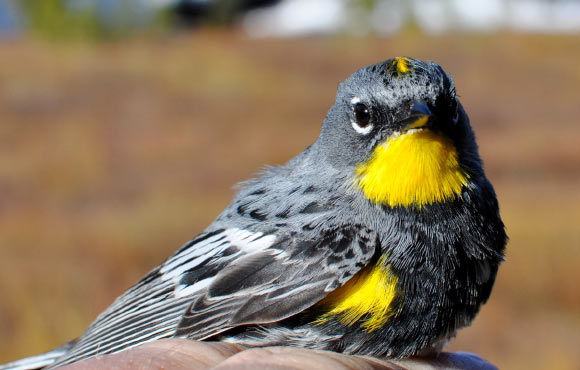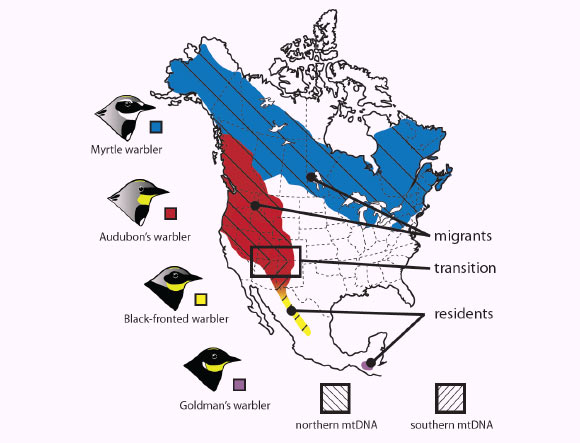Audubon’s warblers (Setophaga coronata auduboni) may have acquired genes from fellow migrating songbirds in order to travel greater distances, say scientists from the University of British Columbia.

An Audubon’s warbler, Setophaga coronata auduboni. Image credit: David P. L. Toews.
While most birds either migrate or remain resident in one region, the Audubon’s warbler, with habitat ranging from the Pacific Northwest to Mexico, exhibits different behaviors in different locations. The northern populations breed and migrate south for the winter, while southern populations have a tendency to stay put all year long.
Ornithologists have long been puzzled by research that indicates some Audubon’s warblers share the same mitochondrial DNA (mtDNA) with myrtle warblers – a different species of songbird that migrates annually to the southeastern U.S., Central America and the Caribbean – even though they look dramatically different.
“Mitochondria are only passed down from mothers to their offspring,” said David Toews, who is a lead author of the study published in the journal Evolution.
“So it’s a very useful marker for differentiating species. In this case, finding two species of songbirds sharing the same mtDNA is very surprising, so we set out to find out why.”
By analyzing genetic data and stable isotopes in feathers, and by measuring oxygen consumption of the mitochondria in their flight muscles, Dr Toews’ team pinpointed the precise geographical location near the Utah-Arizona border where the myrtle warblers’ ‘wanderlust’ genes displace the Audubon warbler’s ancestral mitochondria.

This map shows the breeding ranges, migratory behavior and distribution of mtDNA in four groups of yellow-rumped warblers. New data demonstrates that the area where there is a transition in mtDNA is also home to a shift in migratory behavior, from residents to migrants. Image credit: David P. L. Toews et al.
This region happens to also be the transition zone where we see a change in the migratory behavior of Audubon’s warblers.
“Because of its prominent role in reconstructing evolutionary relationships, people often forget that mitochondria actually have a very important function as the main energy generator of cells,” David Toews said.
“Our findings suggest that over generations, the Audubon’s warbler may have co-opted the myrtle’s mitochondria to better power its own travels.”
______
Bibliographic information: David P. L. Toews et al. Migration, Mitochondria, and the Yellow-Rumped Warbler. Evolution, published online: September 16, 2013; doi: 10.1111/evo.12260







